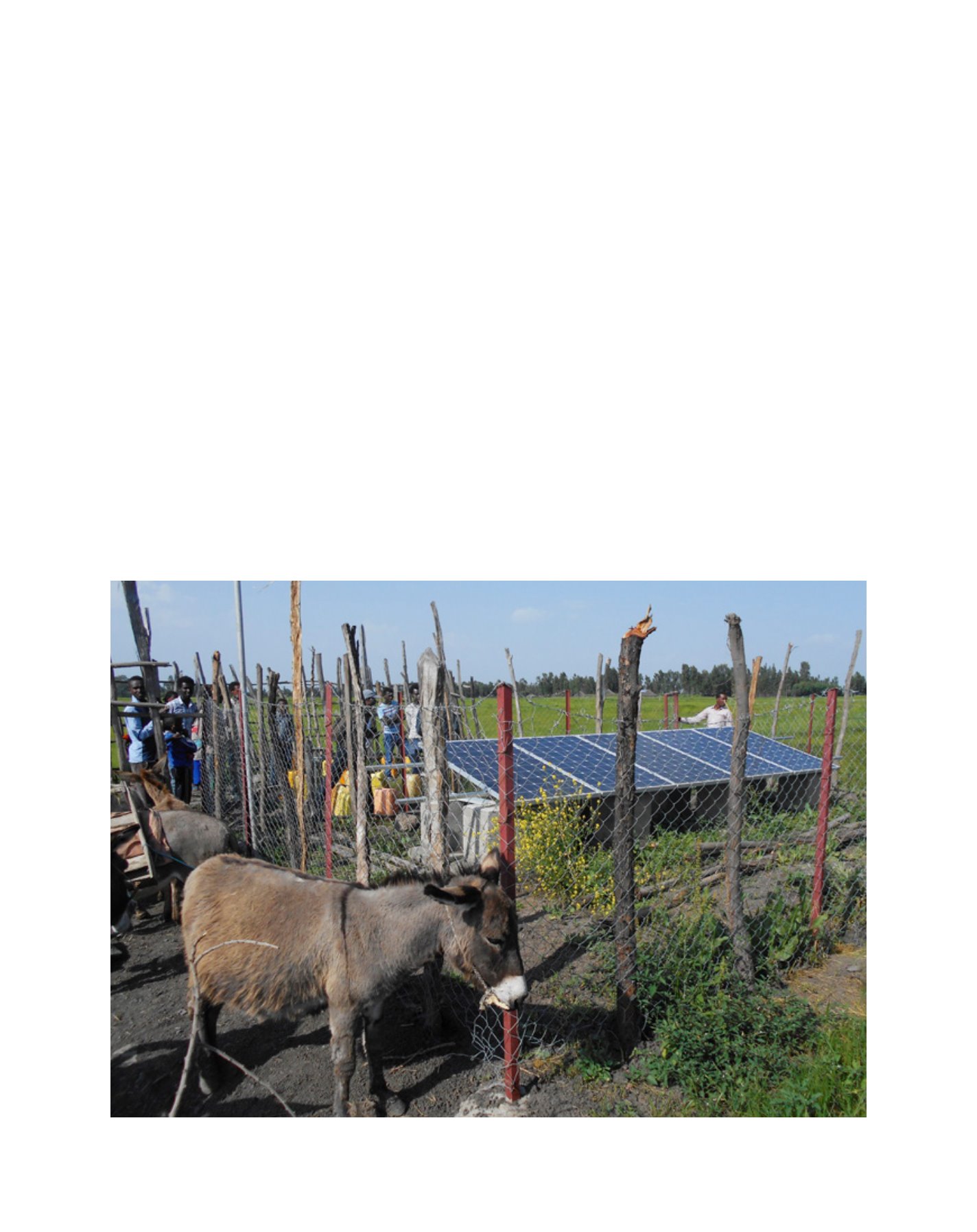

[
] 24
access
to
water
and
sanitation
for
all
The project outputs included development of a strategy
for implementation of solar and wind energy pilot works
and a framework for long term implementation. In 2015, the
supervising consultants recommended to the government
that solar and wind energy should be incorporated in the
UAP. An elaborate final framework report for up-scaling solar
and wind systems has subsequently been presented to the
government by the supervising consultant for consideration.
The report includes numerous recommendations and propos-
als for rolling out solar and wind energy to communities and
national level. The sustainability aspects together with the
possibility for the financing of schemes by final beneficiaries
without government or donor support have been considered.
Whereas the project aimed to implement solutions for water
supply for domestic consumption, some communities will be
able to sustain their livestock during unusual drought years
by providing water that is available from the new facilities.
Government and NGOs are also becoming highly interested
in the use of solar technologies not only for community water
supply but also for micro-irrigation developments and there
is an increase in financial support from developmental part-
ners for the wider use of solar technologies for water supply,
micro-irrigation and rural electrification. Additionally, the
government has developed a plan to replace most of the
existing 10,000 diesel pumps for rural water supply with
solar-powered systems in the next five to ten years.
Sustainability of installed systems
The full benefits (and consumer satisfaction) of solar and
wind driven water supply systems can be achieved only if
the necessary complementary investments are made, such
as to ensure that reservoirs have a minimum of two days of
water storage and that additional water points are installed.
These requirements were predicated by the pilot scheme but,
due to delays in implementation, the government has not yet
finished installation of all of the planned reservoirs, water
supply extensions and water points.
Water Supply Committees (WSCs) have been established
to manage the water supply systems and it has been found
that customers are generally willing to pay for water on a
volume-based tariff system. In order to facilitate the WSCs
to properly manage their water supply systems, there is
need to install meters at every water point. The information
from a bulk meter reading has to be collected and recorded
daily, preferably in a standardised booklet, at least during
the guarantee period. In the subsequent project phase, the
same information can be recorded simultaneously as the
water meters at water points and households are read and
accounted for on a weekly basis.
Solar and wind pumps are just one element in a water
supply system. As evident in other countries, communities
are unable to differentiate problems in a supply system, they
just know when there is a shortage. It is the responsibility
Water carrier waiting for load, near T’Uri, Tulu Bolo, Oromiya
Image: AfDB
















